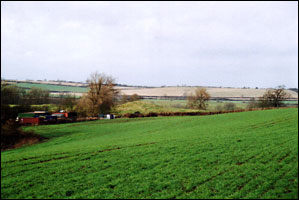![]()
The contents on this page remain on our website for informational purposes only.
Content on this page will not be reviewed or updated.
 |
|
 |
|
|
||||
|
Cublington Airport Resistance Campaign
|
||||
|
||||
|
Milton Keynes Citizen December 22, 2011
One of the joys (!) of living in Milton Keynes is that whilst all the amenities of pseudo city life are on the doorstep - big brand name shopping centres, sporting facilities, entertainment venues etc. - by virtue of the grid roads a ten minute drive can pierce these urban bounds, and transport one back to that green and once pleasant land of rural England; a land of country pubs, cosy thatched cottages, and quaint village tearooms. And perhaps even now within the farthest depths may lie communities as yet unknown to civilised man, and where the rustics still practise such timeless pursuits as wurzel chomping, or fondling ferrets. And where yokels throng the muddy tracks to gawp in awe at the passage of a flying machine. On which subject, not so long ago there was a real threat that flying machines would sweep away much of the local farming acres, for Cublington was scheduled to become the site of London’s third airport. However, by a long and hard fought battle the residents of the area saw off the authorities, and the intriguing tale is told in the DVD ‘Over our Dead Bodies.’ (www.stewkleyfilms.org). So thanks to their yeoman tenacity Cublington remains an unspoilt village in an unspoilt setting, and in a field to the west may be still be seen the ‘Beacon,’ an ancient artificial mound surrounded by earthworks. This indicates the location of the early community, although for reasons not entirely apparent the village, probably during the 15th century, was moved eastwards, to the present situation. Following the Norman Conquest, in the Domesday survey Cublington is recorded as ‘Coblincote’, and being in the possession of ‘Gozelin the Breton’ the manor comprised ten ‘hides,’ with a hide approximating to 120 acres of mainly arable land. Of the nine ploughs that are mentioned four farmed the ‘demesne,’ this being the land owned by the lord, whilst the other five cultivated the remainder of the estate, which was held from the lord by his subjects. According to the Domesday Book these comprised eight ‘villeins’, eight ‘bordars’, and five ‘serfs’, which made a total (not including the lord of the manor, his family and their servants) of some 21 households. ‘Villeins’ each normally maintained a virgate, which, comprising an area of around 30 acres, would lie in a scatter of various strips of an acre or less across the manor, thereby balancing the good situations with those less favourable. A ‘bordar’ cultivated around 10 acres, also held in scattered holdings, whilst the menial ‘serf’ had no land, and as a simple labourer endured a status little better than a slave. In fact even the oxen, which pulled the ploughs, seemed more fortunate, since they had the benefit of water meadows set aside to provide them with hay. At the time of the survey the manor was valued at £6, but other values are also given, and these can indicate whether a manor had suffered from rough treatment at the time of the invasion. Thus because the value at the time of King Edward the Confessor (before the Norman Conquest) is the same as that at the time of the survey, the manor of ‘Coblincote’ seems to have been left untouched. A priority for the invaders was to build a fortification from where to oversee the vanquished locals, and the ‘Beacon’ was a stronghold of the ‘mount and bailey’ type, constructed in quick and easy fashion by digging out an enclosing ditch for a moat, piling the earth into a central mound, and placing a strengthened refuge on top. Probably the fortification was built by the de Chesney family, from whom the ownership later passed by marriage to the Lucy family, who subsequently retained possession for several generations. As for today, the Beacon reminds of a time when the land suffered the ravage of foreign invaders. But locally there now stands another monument, and one that reminds of more recent times, when the locals successfully repelled an airborne invasion by their own countrymen. |
||||
|
|
||||
|
|
||||


